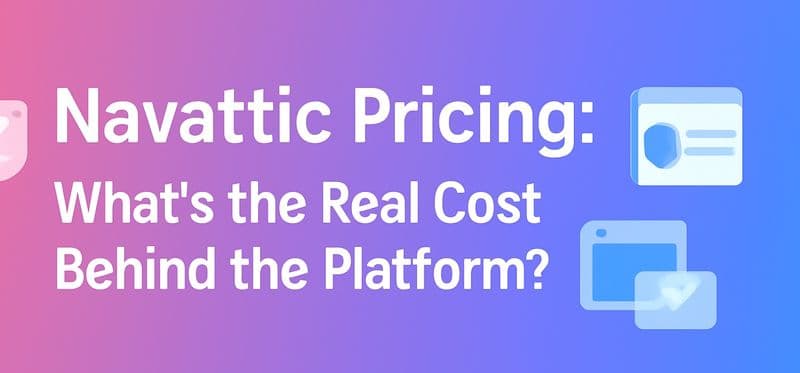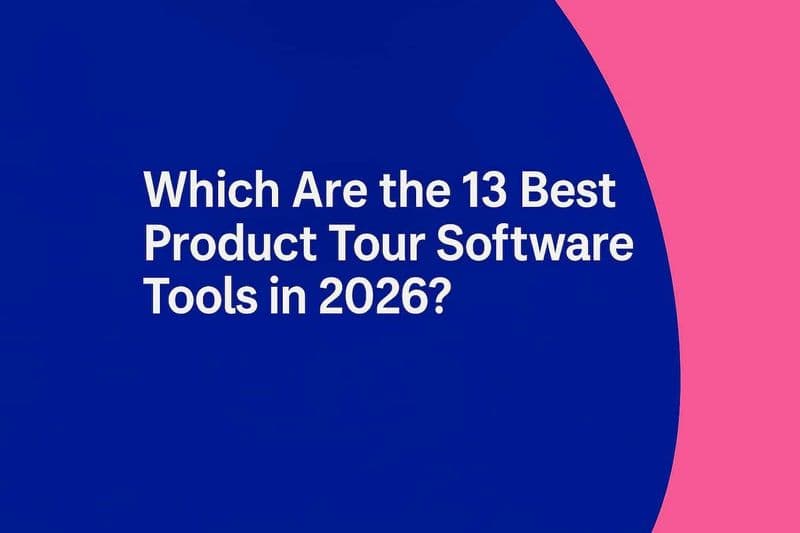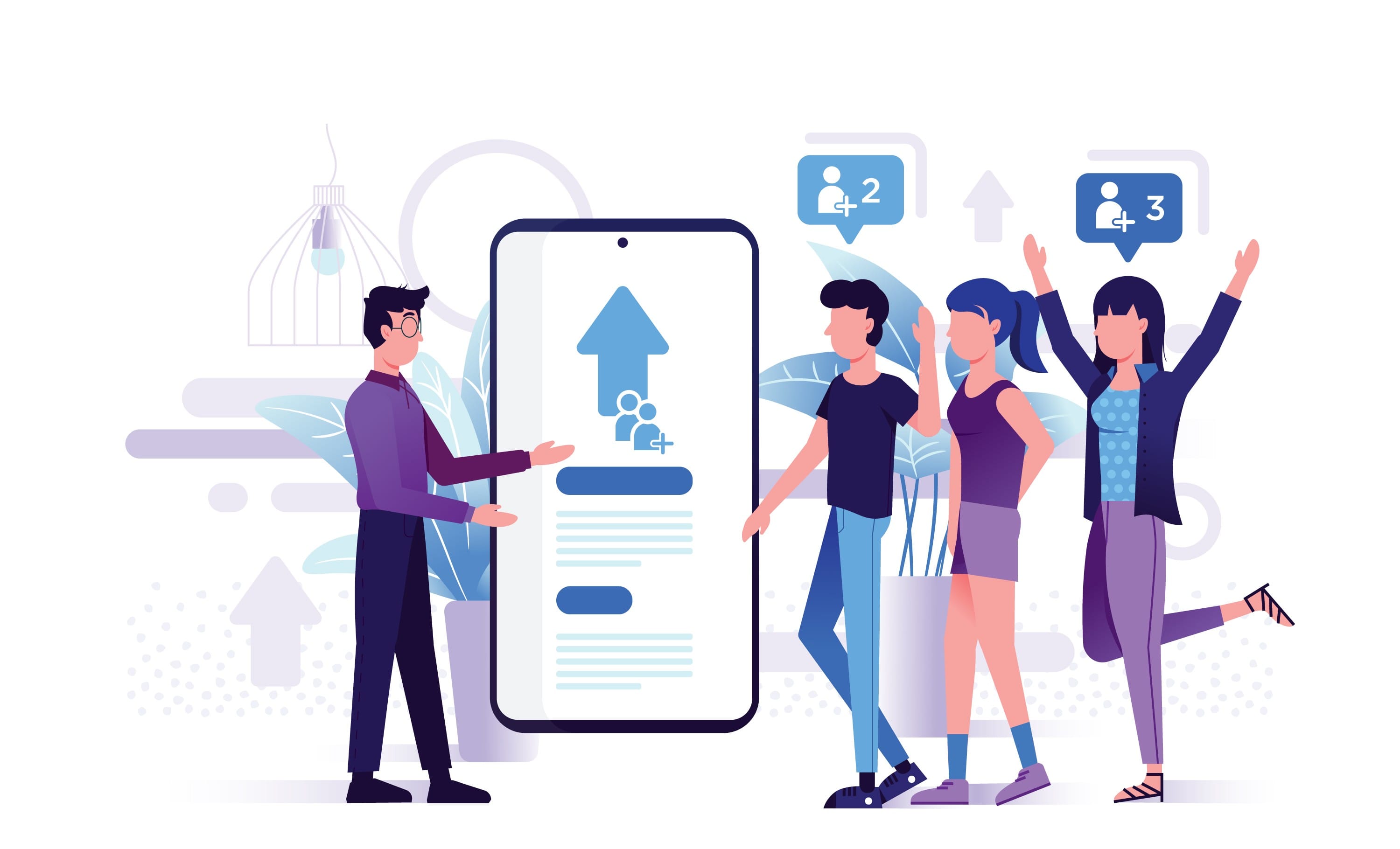
Getting a user to click ‘Sign Up’ is exciting, but that’s just the beginning. The real challenge? Turning that initial curiosity into long-term loyalty. A great onboarding experience isn’t just about showing users where to click—it’s about making them feel at home, helping them see the real value of your product, and guiding them effortlessly toward success.
First impressions matter. If the onboarding process feels clunky or confusing, users are more likely to walk away. But when it’s smooth, engaging, and aligned with their needs, they’re far more likely to stick around. A well-designed onboarding journey reassures users that they’ve made the right choice and helps them see how your product fits into their workflow.
The key? Understanding your audience, shaping your product’s story around their goals, and continuously improving based on real user behavior. When done right, onboarding doesn’t just teach—it builds trust, creates excitement, and turns new users into lifelong customers.
Steps to Craft a Memorable SaaS Onboarding Experience
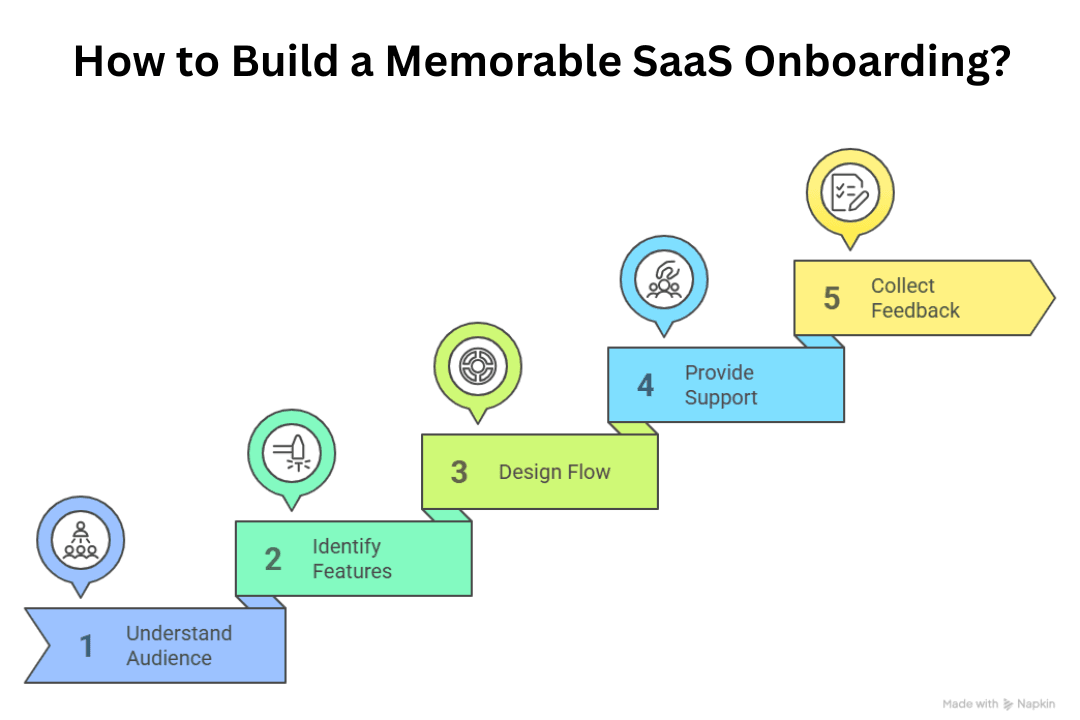
Creating an effective SaaS onboarding experience requires strategic approach focused on user needs, expectations, and challenges. Key steps include understanding the target audience, highlighting essential features, designing engaging welcome flow, offering multi-channel support, gathering feedback for improvement. Together, these elements create seamless, intuitive, rewarding journey.
Step 1: Understanding audience their goals
A starts with users goals. This goes beyond demographics—it involves identifying pain points, preferences, expectations seamless journey.
Businesses can leverage market segmentation persona analysis pinpoint groups based industry, company size, roles. User interviews, surveys, data analytics further reveal motivations, behaviors, trends.
With insights, businesses replace ‘one-size-fits-all’ personalized onboarding, ensuring each user’s needs goals are met effectively.
Step 2: Identifying key product features benefits
SaaS should seamlessly introduce benefits, emphasizing value usability. Highlight functionality goals, they address points effectively.
Use interactive tours, step-by-step guides, tooltips, short videos demonstrate in way. Show action—triggering automation after composing email or showcasing real-time editing—to encourage hands-on learning.
A clear, compelling ensures grasp product’s value, driving engagement retention.
Step 3: Designing instructional flow
The flow is crucial shaping first impression engagement.
A message makes feel valued, reinforcing benefits. The then guides them toward ‘Aha!’ moment—when real value.
Cater different skill levels: offer guidance beginners while allowing advanced skip ahead. Encourage interaction boost learning confidence.
A well-designed start, fostering strong user-product relationship.
Step 4: Providing support through multiple channels
Even experience, may face robust, quick issue resolution enhances satisfaction.
A >knowledge base articles, tutorials, FAQs allows find answers independently. Live chat offers assistance, provides detailed, support. Social media serves as informal yet help channel. AI chatbots streamline responses routine queries, improving efficiency.
Offering diverse options boosts adoption satisfaction, making more effective.
Step 5: Collecting continuous improvement
Periodic collection of integral refining enhancing experience. sheds light aspects that work well, areas need improvement, any unexpected difficulties, new information desire. actionable insights improve current practices strategies.
Key gather might include:
Feedback Area | Importance |
|---|---|
Clarity Instructions | This insight into whether instructions easy understand follow. |
Usefulness Content | |
Learning Experience | Determines if found it learn use during onboarding. |
Overall Satisfaction | Gives overall assessment satisfaction process. |
Feedback be collected various methods, such in-app usability tests. It's ask focused, straightforward questions keep process simple. Once this invaluable gathered analyzed, actions taken implement changes enhancements experience.
SaaS Onboarding Models Strategies
SaaS companies employ different onboarding models and strategies to create a stellar onboarding experience. The choice of model typically revolves around the degree of user engagement and assistance required during the onboarding process. From self-service onboarding that allows users to get started on their own to low-touch and high-touch onboarding that provides varying levels of personalized support and interaction, businesses can choose the approach best suited to their audience and product complexity.
1. Self-service onboarding
Self-service onboarding is a user-centric approach where businesses equip users with all the tools and resources they need to onboard themselves at their own pace. This model is ideal for products with relatively simple interfaces and functionality, as users can quickly familiarize themselves with the product without the need for extensive guidance or hand-holding. A well-designed user interface, intuitive navigation, engaging tutorials and walkthroughs, and a comprehensive knowledge base can facilitate self-service onboarding.
One key advantage of this model is its flexibility—it allows users to learn about the product when and as they choose. Plus, it reduces the workload on customer support teams, making this model cost-effective and scalable. However, self-service onboarding may not be the best fit for complex products requiring detailed explanations or products suited to less tech-savvy users.
In sum, while self-service onboarding promotes user autonomy and convenience, it must be used judiciously, considering the product complexity and the user's technical competence.
2. Low-touch onboarding
Stepping up from self-service, low-touch onboarding features provide users with guidance and support, often via automated processes. While users primarily onboard themselves, they have the added assistance of tutorials, in-app prompts, tooltips, and automated emails or messages providing relevant information and tips.
One area where low-touch onboarding shines is the use of triggered communications based on user behavior. For example, if a user adds items to their cart but does not make a purchase, an automated email can nudge them to complete the transaction. Similarly, if a user completes a desirable action like utilizing a key feature, they can receive an automated congratulatory message endorsing their progress.
Low-touch onboarding strikes a balance between user autonomy and supportive guidance. While it requires more effort than self-service onboarding to set up triggered communications and curate targeted content, it has the advantage of being highly personalized and adaptive, adjusting to the pace and needs of individual users.
3. High-touch onboarding
High-touch onboarding provides the highest level of personalized assistance and interaction during the onboarding process. It usually involves real-time human support via live chat, phone calls, dedicated account managers, and even personal training or workshops.
High-touch onboarding is typically used for complex SaaS products or premium accounts where users might benefit from in-depth, personalized guidance to fully harness the product’s capabilities. With high-touch onboarding, businesses can provide thorough explanations for advanced features, address user queries promptly, and ensure a smooth onboarding journey with minimal hiccups.
The primary advantage of high-touch onboarding is its comprehensive approach to user guidance, making it apt for intricate products and premium customers. It allows businesses to forge stronger relationships with the users right off the bat. However, it is more cost-intensive and resource-heavy, necessitating a dedicated customer success team.
Therefore, if the product's complexity or clients' premium nature demands extensive support, high-touch onboarding can cultivate stronger, longer-lasting user relationships, ensuring complete product understanding and adoption.
Top Examples of Outstanding SaaS Onboarding Experiences
Regarding excellent SaaS onboarding experiences, few stand out in their approach and execution. Each of these examples offers unique insights into successfully guiding users from signing up to becoming proficient with the product. Companies like Calendly, Trello, Asana, HubSpot, and Whatfix have built compelling onboarding experiences that balance simplicity with power, combining intuitive design with personalization, robust support, and constant enhancement based on user feedback. Delving deeper into these examples can help SaaS businesses glean effective strategies and best practices, inspiring them to create or refine an onboarding experience that truly resonates with users.
Example 1: Calendly
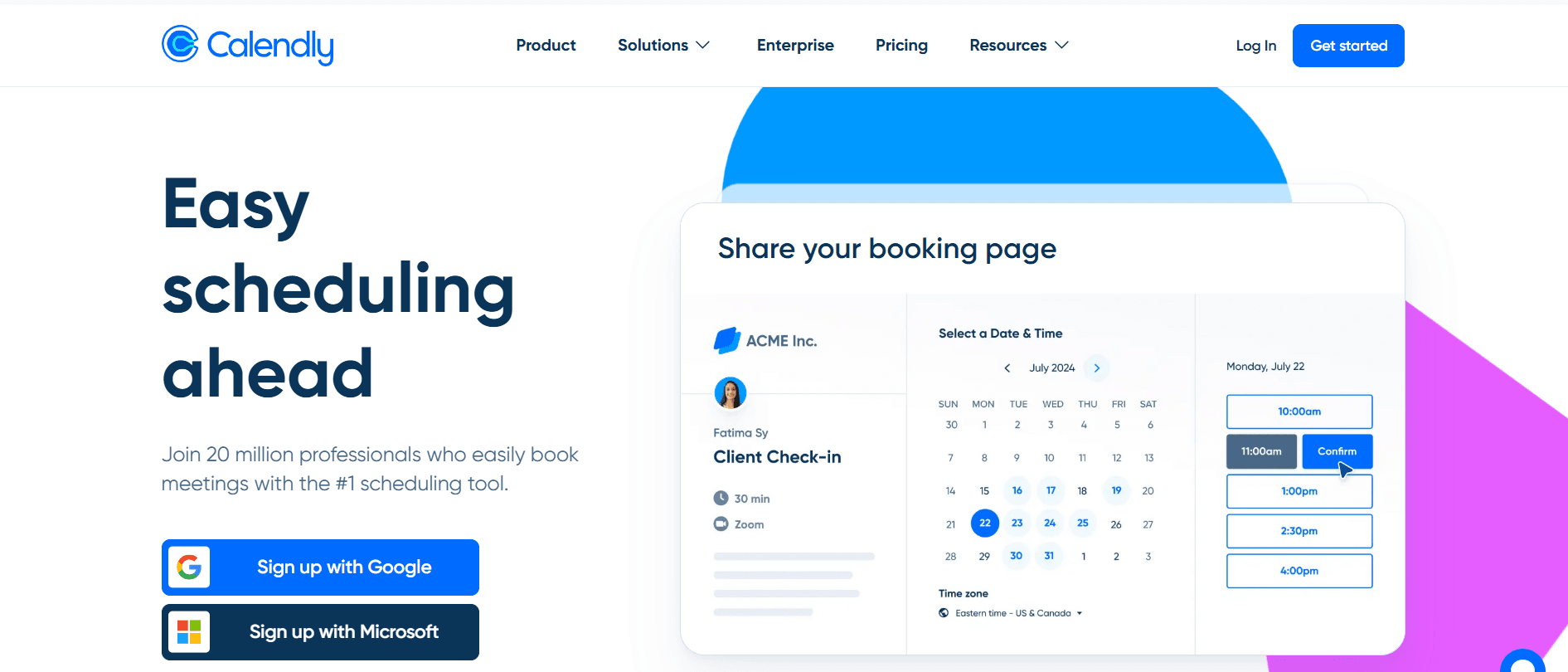
Calendly, an automated scheduling software stands out for its straightforward yet thorough onboarding process. It starts with a clean, uncomplicated sign-up form asking for just the work email to start. Then, it instantly facilitates user action by encouraging users to schedule their first event.
As a tool mainly designed to schedule meetings, this immediate induction to scheduling aligns perfectly with the tool's purpose, validating the product's value to the user. Simultaneously, the user becomes familiar with the scheduling process, an integral activity in using the product.
Subsequently, users are guided to personalize their Calendly URL. This step not only simplifies the scheduling process but also provides a personalized touch to the user’s interface with Calendly.
Calendly also promotes event customization by enabling users to set their availability preferences. It also provides an option to integrate their calendars, making it easier for users to manage meetings without double bookings or schedule overlaps. Both these steps demonstrate thoughtfulness from the product side, attending to user convenience and customization needs.
Lastly, Calendly urges users to share their Calendly links with others, emphasizing the fact that they are all set to start scheduling meetings. This final step seals the onboarding process, leaving users confident about using the platform.
Overall, Calendly's onboarding experience is notable for its instant value provision, simplicity, personalization, and thorough guide through key features. Furthermore, it maintains user-centricity throughout the process, ensuring user comfort and understanding at every step.
Example 2: Asana
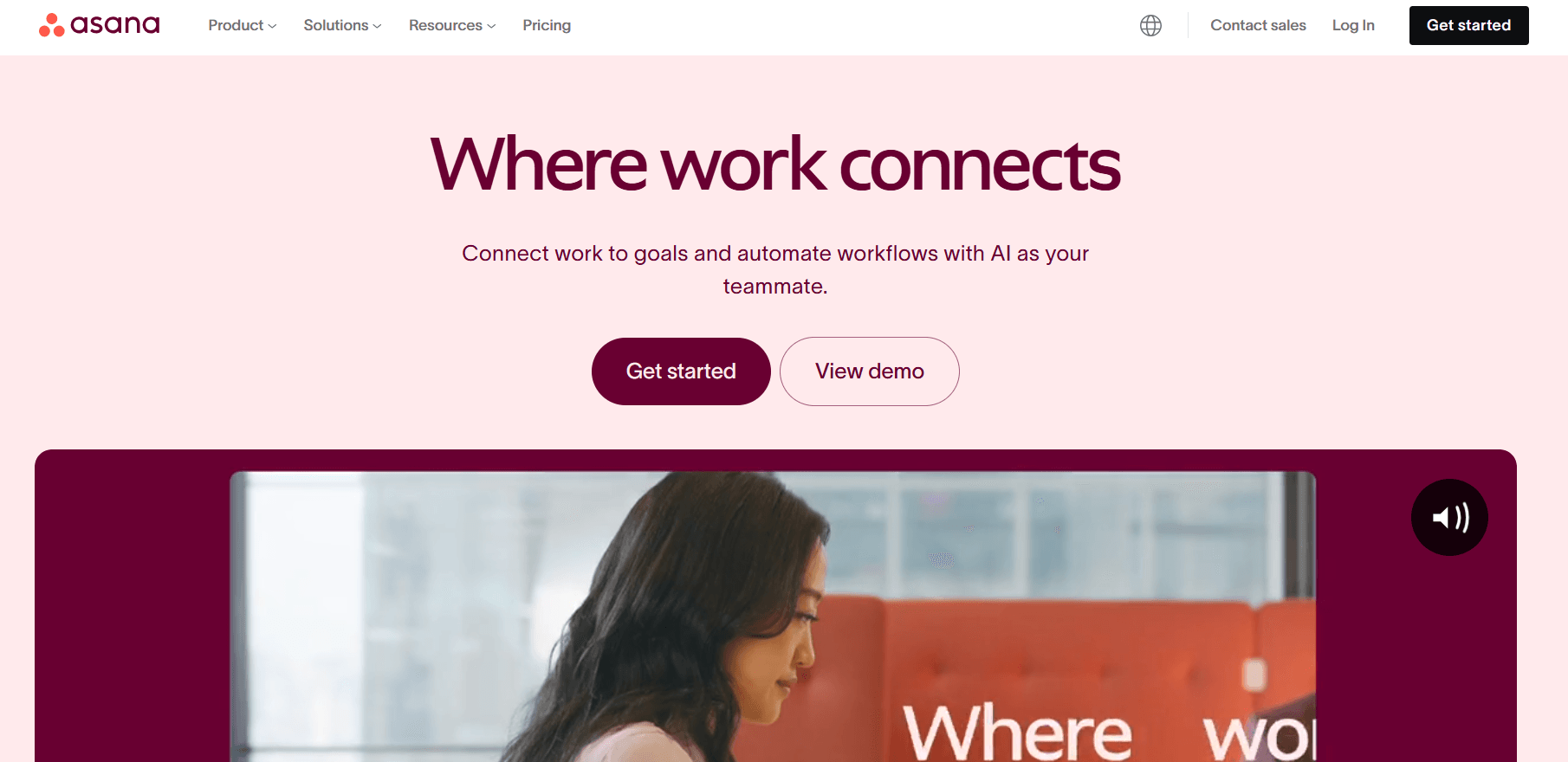
Asana, a leading SaaS company, excels in its user onboarding process. By offering a seamless onboarding flow, Asana effectively guides users, ensuring a positive onboarding experience for new customers. It's interactive walkthroughs and user-friendly product tour help users understand key features quickly. Asana's user engagement strategies, such as progress bars and contextual help, enhance user activation and adoption rates. The Asana onboarding checklist and personalized user journey contribute to high customer satisfaction and successful product adoption. Asana sets a benchmark for best practices in SaaS user onboarding.
Example 3: Hubspot
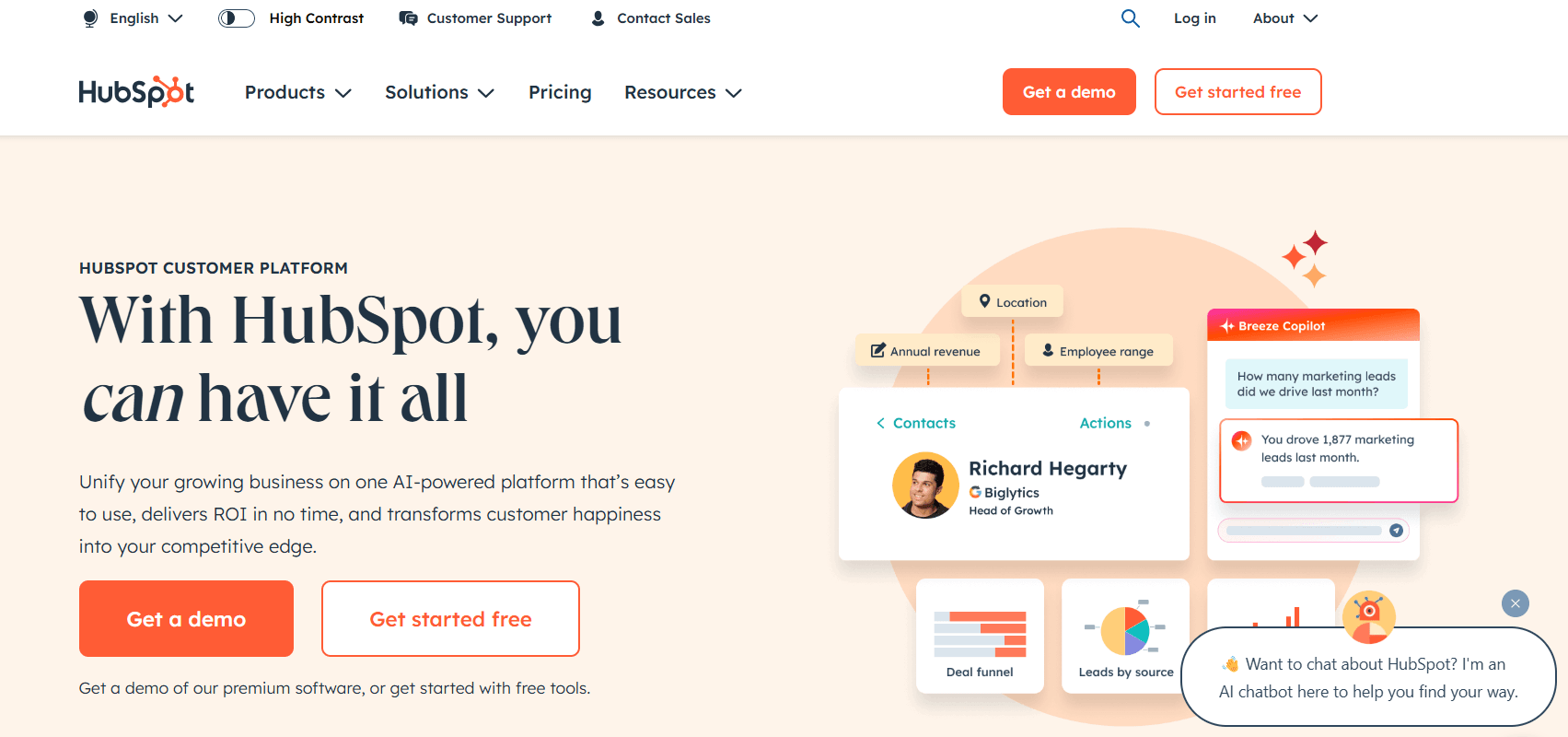
HubSpot exemplifies a seamless Saas user onboarding journey with interactive walkthroughs and contextual help. Their onboarding flow focuses on guiding users through key features, ensuring customer success. By offering a comprehensive knowledge base and exceptional customer support, HubSpot enhances user engagement and adoption rates. The platform's user-friendly interface and progress-tracking features provide a positive onboarding experience. HubSpot's approach to customer onboarding demonstrates the importance of effective onboarding processes in boosting customer satisfaction and product adoption.
Example 4: Whatfix
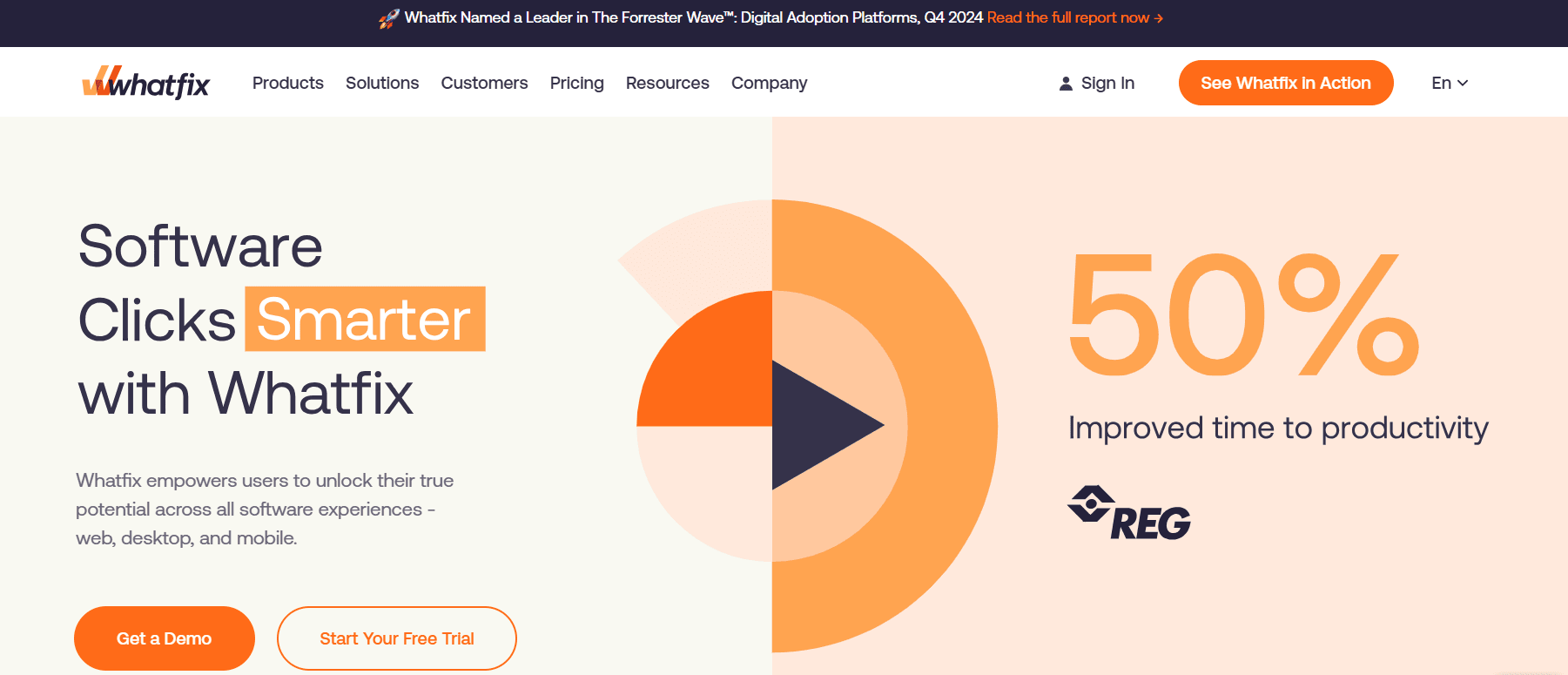
Whatfix, a leading player in the SaaS industry, excels in providing a seamless onboarding process for its users. By leveraging interactive walkthroughs and guided tours, Whatfix ensures that new customers swiftly grasp the key features of their saas product. User engagement is enhanced through contextual help and effective user activation strategies, leading to higher adoption rates. The customer success team at Whatfix plays a pivotal role in guiding users through their onboarding journey, resulting in a great onboarding experience that sets the stage for long-term customer success.
Turn First-Time Users into Long-Term Customers with Interactive Demos
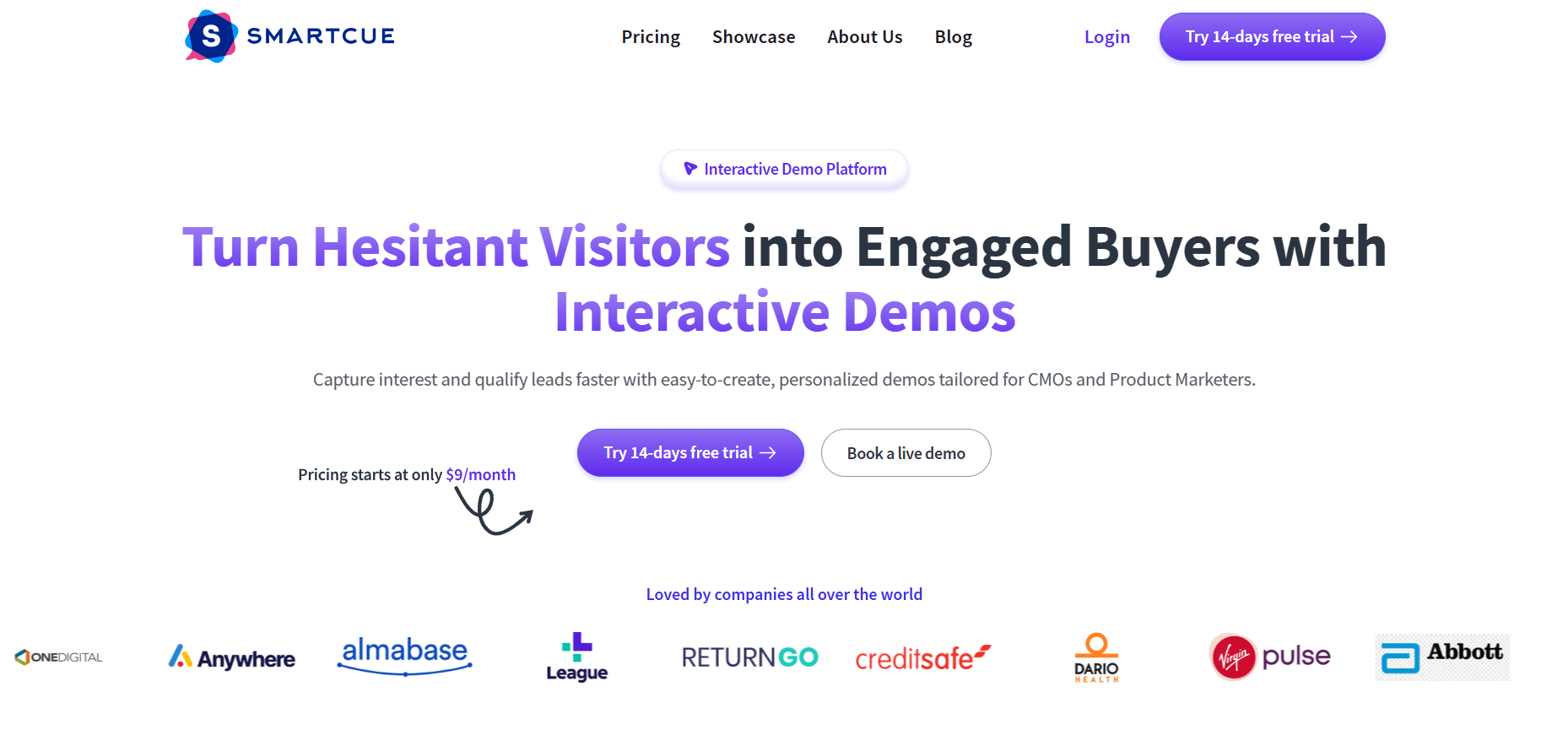
The first step in a successful customer onboarding journey is delivering a smooth, engaging, and informative experience. SmartCue makes this easy with interactive demos that guide potential customers through your SaaS customer onboarding process—ensuring they fully grasp the different features of your product without confusion.
The Best SaaS Onboarding Experience—Without Wasting a Lot of Time
Most SaaS businesses struggle with onboarding, whether it's empty states, unclear walkthroughs, or a customer success manager having to explain everything manually. SmartCue changes the game by offering the hands-on, best way to onboard users without requiring live demos every time.
Showcase the Most Important Things First: Highlight your best SaaS features in a way that makes the most sense to your user base.
Cut the Learning Curve: Your new tool will immediately be understood by your users if you offer an intuitive, self-paced customer onboarding flow.
Boost User Engagement & Retention: An effective SaaS customer onboarding strategy reduces drop-offs and increases paid plan conversions.
See How SmartCue Enhances Your Customer Onboarding Process
No More Boring Videos or PDFs: SmartCue lets you create dynamic, interactive demos—far better than traditional methods like Notion pages or lengthy guides.
Real-Time Feedback & Analysis: Track user interactions and gather customer feedback to improve the experience continuously.
Seamless Integration: Works effortlessly with tools like Asana Guide, CRMs, and other use cases you need.
Try SmartCue’s Free Trial & Optimize Your Onboarding
Why lose leads due to poor user experience? Ensure every first-time interaction with your product is engaging, insightful, and conversion-driven.
Conclusion
In wrapping up, creating a seamless SaaS user onboarding experience is paramount to ensure customer success. By leveraging the best practices and insights from exemplary onboarding journeys like Asana, HubSpot, and Whatfix, SaaS companies can guide users effectively through their onboarding process. Engaging new customers from the first interaction, highlighting key features, providing excellent customer support, and incorporating user feedback is critical for boosting product adoption rates. By continuously refining the onboarding flow based on user behavior and feedback, companies can enhance user satisfaction and retention rates significantly.
Frequently Asked Questions
What role does customer success play in SaaS onboarding?
Customer success in SaaS onboarding ensures users maximize the platform's benefits. It involves proactive support, guidance, and feedback to help customers achieve their goals efficiently. Effective customer success drives user engagement and retention, leading to long-term satisfaction and loyalty.
In what ways can onboarding experiences be personalized for different user groups?
Personalize onboarding experiences by segmenting users based on their needs, preferences, and behavior. Tailor content, guides, and tutorials to cater to specific user groups. Utilize data analytics to understand user requirements better and adjust the onboarding process accordingly.
How can automation be used effectively in the onboarding experience?
Automating repetitive tasks, personalized user journeys, and timely notifications are key to effective onboarding automation. Using data-driven insights and AI algorithms can enhance the onboarding process, ensuring a seamless and engaging experience for users.
How can businesses evaluate and measure the success of their onboarding experiences?
By tracking key metrics like user engagement, feature adoption rates, and customer satisfaction surveys, businesses can effectively evaluate and measure the success of their onboarding experiences. Utilizing analytics tools provides valuable insights for continuous improvement.
What are some common challenges and pitfalls businesses face when creating a SaaS onboarding experience?
Some common challenges and pitfalls businesses face when creating a SaaS onboarding experience include user confusion with complex interfaces, ineffective communication strategies leading to drop-offs, and difficulty in aligning the onboarding process with varying customer needs.

